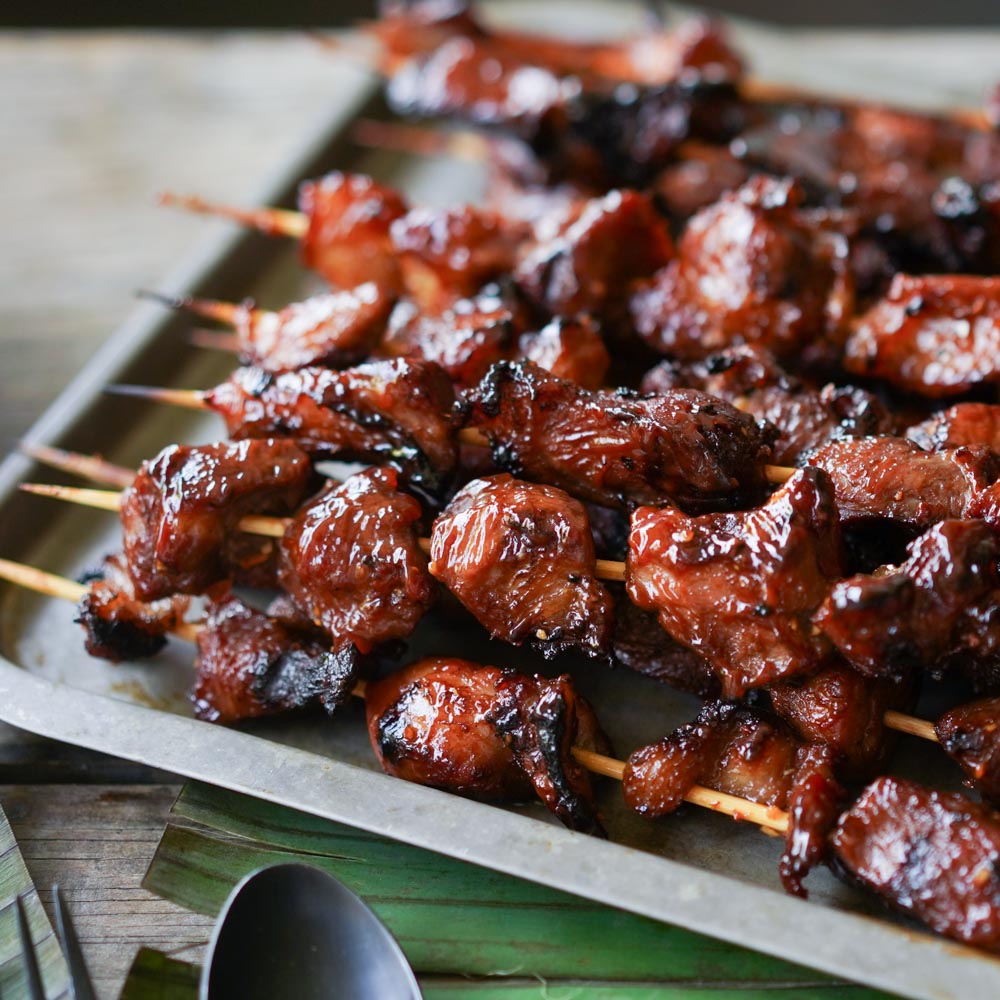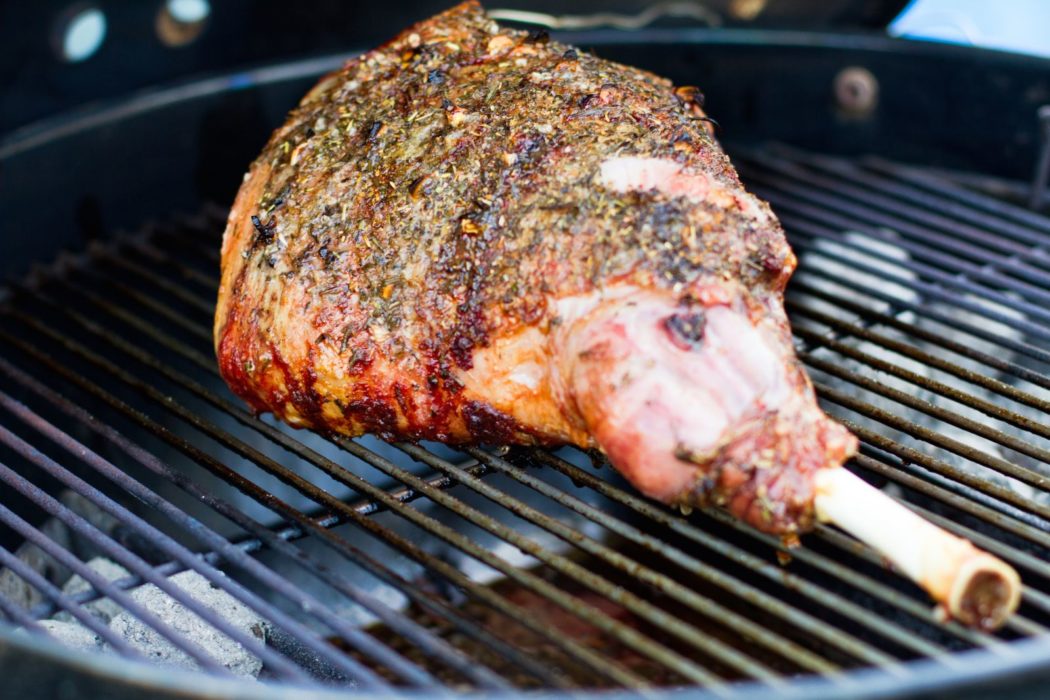Lamb barbecue, a culinary delight that tantalizes taste buds and captivates hearts, has a rich history and cultural significance that spans across the globe. From the succulent skewers of Middle Eastern street food to the slow-cooked roasts of Mediterranean cuisine, lamb barbecue recipes offer a diverse range of flavors and cooking techniques that cater to every palate.
In this comprehensive guide, we will delve into the world of lamb barbecue, exploring the different types of recipes, essential ingredients, preparation methods, grilling techniques, and side dishes that make this dish a culinary masterpiece. Whether you’re a seasoned grill master or a novice cook looking to impress your guests, this guide will provide you with all the knowledge and inspiration you need to create mouthwatering lamb barbecue dishes that will leave a lasting impression.
Introduction
Lamb barbecue is a culinary masterpiece that tantalizes taste buds and evokes a sense of convivial gatherings. Its succulent flavors, aromatic spices, and tender texture have captivated palates worldwide, making it a beloved dish across cultures.
The origins of lamb barbecue can be traced back to ancient civilizations, where it was a staple dish at feasts and celebrations. Over the centuries, it has evolved into a diverse array of regional variations, each boasting its unique blend of spices, marinades, and cooking techniques.
Cultural Significance
Lamb barbecue holds a significant place in many cultures. In the Middle East, it is a cornerstone of traditional cuisine, often served as a centerpiece at special occasions. In the Mediterranean, it is a popular dish for summer gatherings and outdoor picnics.
In South America, lamb barbecue is a staple of street food and is often enjoyed with spicy sauces and fresh salads.
Types of Lamb Barbecue Recipes
Lamb barbecue recipes offer a diverse array of flavors and techniques, influenced by regional variations and cultural traditions. Each type of recipe showcases unique characteristics and nuances that enhance the overall dining experience.
Regional Variations
- Mediterranean Lamb Barbecue: Characterized by its use of aromatic herbs, such as rosemary, thyme, and oregano, combined with garlic and olive oil. The lamb is typically marinated in a flavorful blend of spices before being grilled or roasted.
- Middle Eastern Lamb Barbecue: Emphasizes bold flavors with a blend of cumin, coriander, and paprika. The lamb is often cooked over an open flame or in a clay oven, infusing it with a smoky aroma.
- South Asian Lamb Barbecue: Incorporates a rich blend of spices, including garam masala, turmeric, and ginger. The lamb is typically marinated in yogurt and spices before being grilled or cooked in a tandoor.
Cooking Methods
- Grilled Lamb Barbecue: Involves cooking the lamb directly over a hot grill, resulting in a flavorful char and tender interior. This method is ideal for cuts of lamb that are well-marbled and have a good amount of fat.
- Roasted Lamb Barbecue: Slow-cooking the lamb in an oven or rotisserie creates a tender and succulent texture. This method is suitable for larger cuts of lamb, such as a leg of lamb or a shoulder.
- Smoked Lamb Barbecue: Infuses the lamb with a rich, smoky flavor by cooking it over indirect heat in a smoker. This method requires patience but yields a tender and flavorful result.
Ingredients and Preparation

Preparing a delectable lamb barbecue requires careful selection of ingredients and meticulous preparation techniques. To ensure a flavorful and tender outcome, follow these guidelines:
Essential Ingredients
The cornerstone of a lamb barbecue is the lamb itself. Choose high-quality cuts that are well-marbled for optimal flavor and tenderness. Common cuts include:
- Leg of lamb
- Lamb shoulder
- Lamb chops
- Lamb ribs
In addition to the lamb, a marinade is essential for infusing flavor and tenderizing the meat. Marinades typically consist of a blend of aromatic herbs, spices, and liquids such as olive oil, vinegar, or yogurt. Common seasonings include:
- Rosemary
- Thyme
- Garlic
- Paprika
- Cumin
Sides are an integral part of any barbecue spread, providing a balance of flavors and textures. Consider serving:
- Grilled vegetables
- Fresh salads
- Hummus and pita bread
- Rice pilaf
Preparation Techniques
Proper preparation is crucial for a successful lamb barbecue. Begin by marinating the lamb for at least several hours or overnight to allow the flavors to penetrate deeply. Season the lamb generously with a blend of herbs and spices before grilling.
For optimal tenderness, grill the lamb over indirect heat, using a charcoal or gas grill. This method ensures even cooking and prevents the meat from becoming overcooked.
Grilling Techniques and Equipment
Grilling lamb barbecue involves a range of techniques and equipment to achieve the desired flavor and texture. Different methods and grills offer unique advantages, allowing for versatility in the cooking process.
Direct Grilling
Direct grilling places the lamb directly over the heat source, resulting in intense heat and rapid cooking. This technique is ideal for creating a flavorful, charred exterior and a juicy interior. Charcoal and gas grills are suitable for direct grilling.
Indirect Grilling
Indirect grilling involves cooking the lamb indirectly, with the heat source placed to the side of the food. This method allows for slower, more even cooking, resulting in tender and succulent meat. Indirect grilling is commonly used for larger cuts of lamb, such as a whole leg or shoulder.
Charcoal and gas grills with adjustable heat zones are well-suited for indirect grilling.
Rotisserie Cooking
Rotisserie cooking involves rotating the lamb on a spit over the heat source. This technique ensures even cooking and prevents the meat from drying out. Rotisserie cooking is a great option for larger cuts of lamb, such as a whole lamb or leg.
Rotisserie grills are specifically designed for this purpose.
Marinades and Seasonings
Marinades and seasonings play a crucial role in elevating the flavor of lamb barbecue. They tenderize the meat, infuse it with aromatic flavors, and create a tantalizing crust.
Types of Marinades
- Acidic Marinades: These marinades, typically made with vinegar, lemon juice, or yogurt, break down the muscle fibers, resulting in a tender and juicy result.
- Oil-Based Marinades: Olive oil, canola oil, or melted butter form the base of these marinades, which coat the lamb and prevent it from drying out during grilling.
- Herb and Spice Marinades: Fresh or dried herbs and spices, such as rosemary, thyme, garlic, paprika, and cumin, impart their distinct flavors into the meat.
Creating Flavorful Marinades
- Balance of Flavors: Aim for a harmonious blend of sweet, savory, acidic, and spicy notes.
- Time to Marinate: The marinating time varies depending on the cut of lamb and the desired level of flavor infusion. Generally, thicker cuts require longer marinating times (up to 24 hours).
- Acidic Marinades: Use these marinades sparingly and for shorter durations to avoid overpowering the meat’s natural flavor.
Seasonings for Rubs and Sauces
- Dry Rubs: A blend of spices and herbs applied directly to the lamb before grilling. Rubs create a flavorful crust and enhance the meat’s natural juices.
- Sauces: Sauces, made with a base of tomato, wine, or stock, are typically brushed onto the lamb during grilling to add moisture and enhance the flavor.
Recipes for Marinades and Rubs
- Lemon-Herb Marinade: Combine olive oil, lemon juice, fresh rosemary, thyme, and garlic in a bowl.
- Smoky Rub: Mix together smoked paprika, cumin, chili powder, and salt.
Side Dishes and Accompaniments

When planning a lamb barbecue, it’s essential to consider side dishes and accompaniments that complement the bold flavors of the meat. These elements enhance the overall dining experience, providing balance, freshness, and additional culinary delights.
Salads
Salads offer a refreshing contrast to the richness of lamb barbecue. Opt for light and flavorful options such as fattoush, tabbouleh, or Greek salad. These salads incorporate fresh vegetables, herbs, and tangy dressings, providing a burst of acidity and freshness.
Vegetables
Grilled vegetables are an excellent accompaniment to lamb barbecue. Consider grilling zucchini, bell peppers, onions, or eggplant. These vegetables absorb the smoky flavors of the grill, becoming tender and caramelized. They add a touch of sweetness and complexity to the meal.
Sauces
Sauces can elevate the taste of lamb barbecue. Mint sauce is a classic choice, providing a refreshing and herbaceous complement to the meat. Other options include tzatziki, a creamy cucumber-yogurt sauce, or a spicy harissa sauce for those who prefer a kick.
Presentation and Serving Suggestions
The presentation of your lamb barbecue can greatly enhance the overall dining experience. Consider the following tips for creating a visually appealing and appetizing display:
Choose a serving platter that complements the size and shape of your lamb. A large, oval platter is a classic choice, but you can also use a rectangular or round platter. For a more rustic presentation, serve the lamb on a wooden cutting board.
Garnishes
Fresh herbs, such as mint, cilantro, or parsley, add a pop of color and flavor to your lamb barbecue. You can also use sliced onions, tomatoes, or cucumbers as garnishes.
Platters
The type of platter you use can also affect the presentation of your lamb barbecue. A large, shallow platter will allow you to spread out the lamb and its accompaniments, while a deep platter will help to keep the juices in.
Serving Styles
You can serve your lamb barbecue whole or sliced. If you are serving the lamb whole, be sure to carve it at the table so that your guests can see how juicy and tender it is. If you are serving the lamb sliced, arrange the slices on the platter in an overlapping pattern.
Last Point
Lamb barbecue, with its versatility, cultural significance, and tantalizing flavors, is a culinary art form that continues to captivate food enthusiasts worldwide. Whether you prefer the smoky char of grilled skewers or the tender fall-off-the-bone slow-cooked roasts, there’s a lamb barbecue recipe out there to satisfy every craving.
Experiment with different marinades, seasonings, and grilling techniques to create your own unique dishes, and don’t forget to explore the diverse side dishes and accompaniments that complement the flavors of lamb so well. With this guide as your culinary compass, you’ll be able to embark on a delicious journey of lamb barbecue that will leave your taste buds dancing with delight.
Frequently Asked Questions
What are the most popular cuts of lamb for barbecue?
Leg of lamb, shoulder, and rack of lamb are some of the most commonly used cuts for lamb barbecue.
How long should I marinate my lamb before grilling?
Marinating times can vary depending on the marinade used and the cut of lamb. Generally, marinating for at least 4 hours is recommended, but overnight marinating is ideal for maximum flavor absorption.
What are some essential seasonings for lamb barbecue?
Cumin, coriander, paprika, garlic, and rosemary are some classic seasonings that pair well with lamb. Feel free to experiment with different combinations to create your own unique flavor profile.
Can I use a gas grill for lamb barbecue?
Yes, gas grills can be used for lamb barbecue. However, it’s important to control the heat and avoid overcooking the lamb.
What are some popular side dishes to serve with lamb barbecue?
Tabbouleh, fattoush, hummus, pita bread, and grilled vegetables are some popular side dishes that complement the flavors of lamb barbecue.
